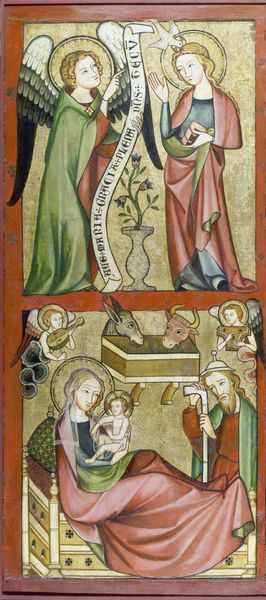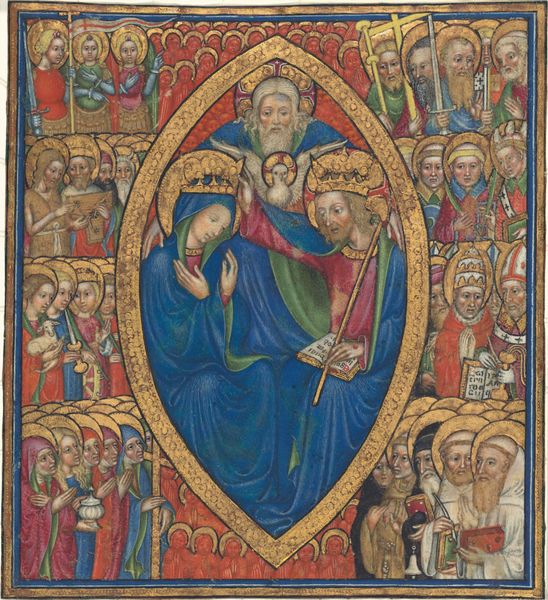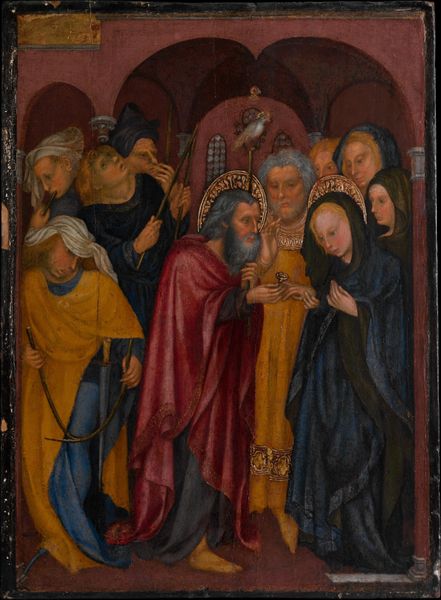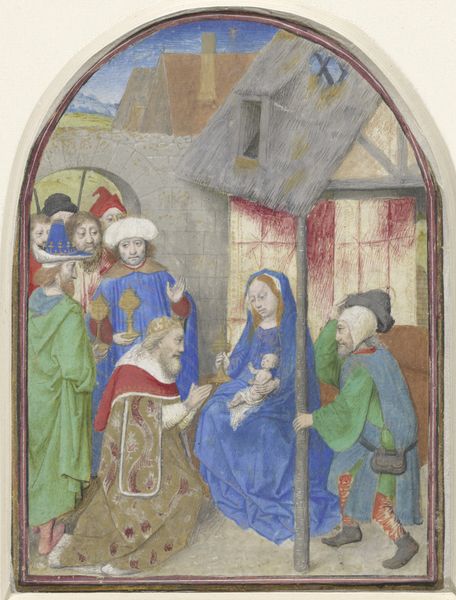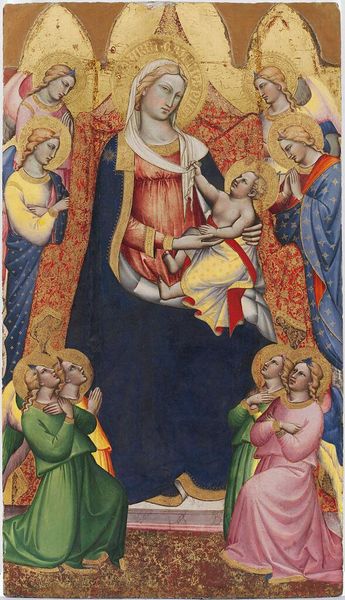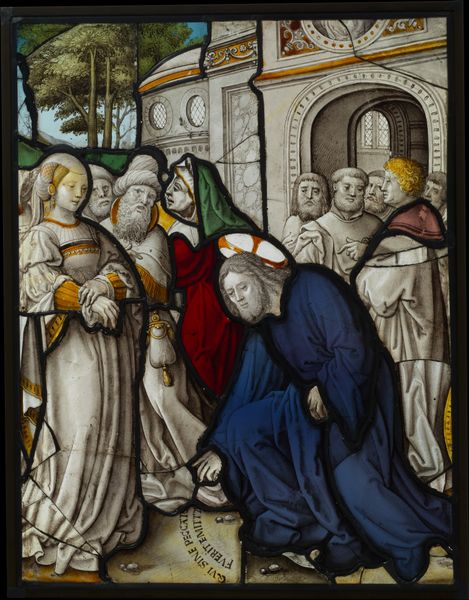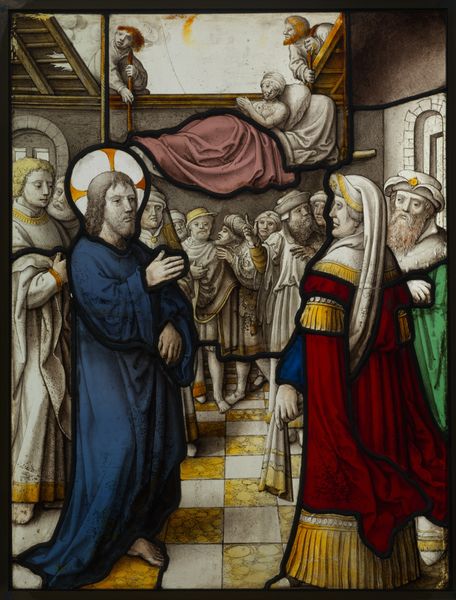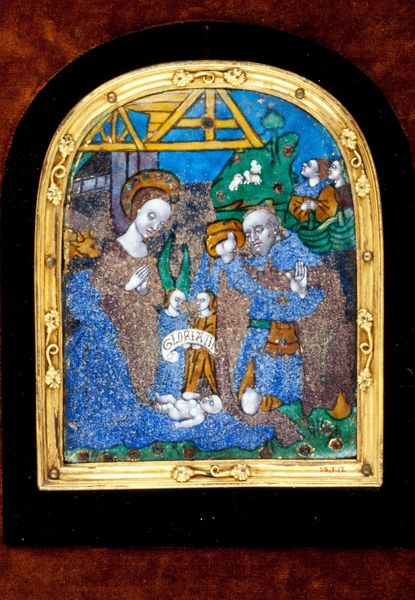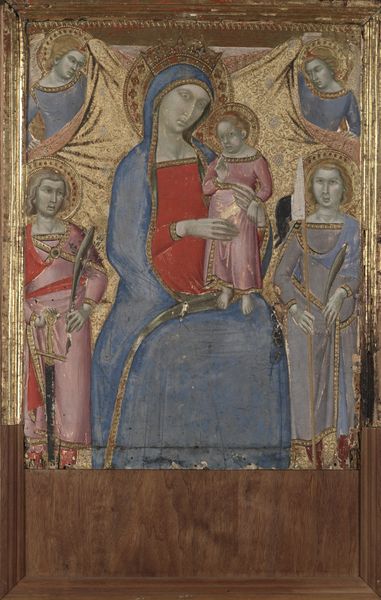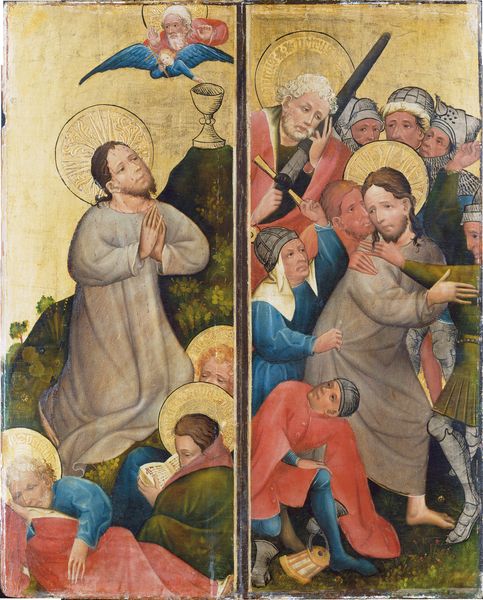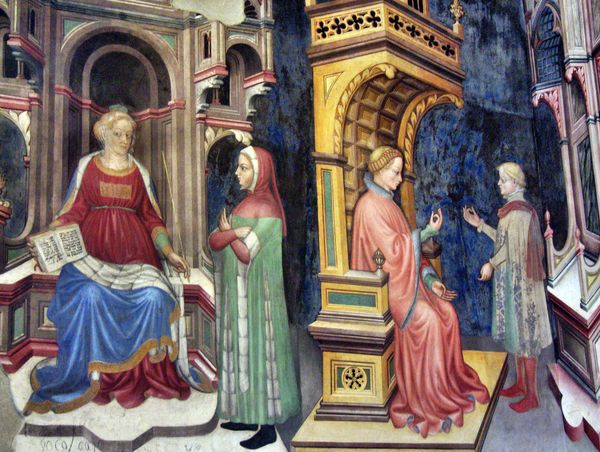
tempera, painting
#
portrait
#
medieval
#
tempera
#
painting
#
gothic
#
figuration
#
oil painting
#
jesus-christ
#
group-portraits
#
history-painting
Dimensions: 153.7 x 119.2 x min. 2.8 cm
Copyright: Public Domain
Editor: So, here we have an intriguing tempera painting from the late medieval period, around 1325 to 1335, titled "Coronation and Death of the Virgin." It's striking how the artist depicts two distinct scenes stacked vertically. What do you see in this piece? Curator: What strikes me is how this work, ostensibly about religious figures, subtly reflects the power dynamics of its time. We see the Virgin Mary’s life presented as a narrative controlled by male figures—God the Father crowning her in heaven while earthly male figures preside over her death below. It really prompts the question: whose story are we *really* seeing? Editor: That's a fascinating perspective. I hadn't considered it in terms of power dynamics. Are you suggesting that even in religious art, we find echoes of patriarchal structures? Curator: Precisely. The figures surrounding the Virgin’s deathbed, mostly male apostles, emphasize her role as a figure to be venerated and managed, even in death. Consider the implications of Christ, the baby, held in someone's arm like an object. Doesn't this visual reinforce the theological argument and political strategy concerning who gets to occupy the driver's seat in earthly structures and spiritual narratives? Editor: I see what you mean. It's almost as if the painting reinforces a specific social order under the guise of religious narrative. Are the bright colors and the use of gold also communicating a particular message here? Curator: Absolutely. The gold, often associated with divinity and purity, elevates the Virgin, yet also serves to solidify the Church's wealth and authority. These choices always serve power, so they are never innocuous or purely artistic. The question we need to keep asking is always: for what purpose was this painting created and for whose benefit? Editor: Wow, I’m starting to see this piece in a completely different light. I initially focused on the religious aspects, but your interpretation highlights a powerful commentary on gender and societal structures. Curator: And that’s the beauty of art history; it’s never just about the aesthetics. It's about unpacking the layers of meaning embedded within the work, especially how they reflect and reinforce the social and political landscapes of their time. Editor: Thank you. It’s so interesting to consider how a seemingly devotional image can be such a rich source for discussing issues of power and representation.
Comments
Join the conversation
Join millions of artists and users on Artera today and experience the ultimate creative platform.

